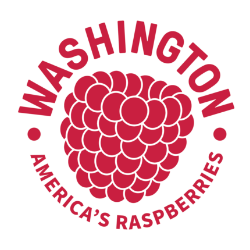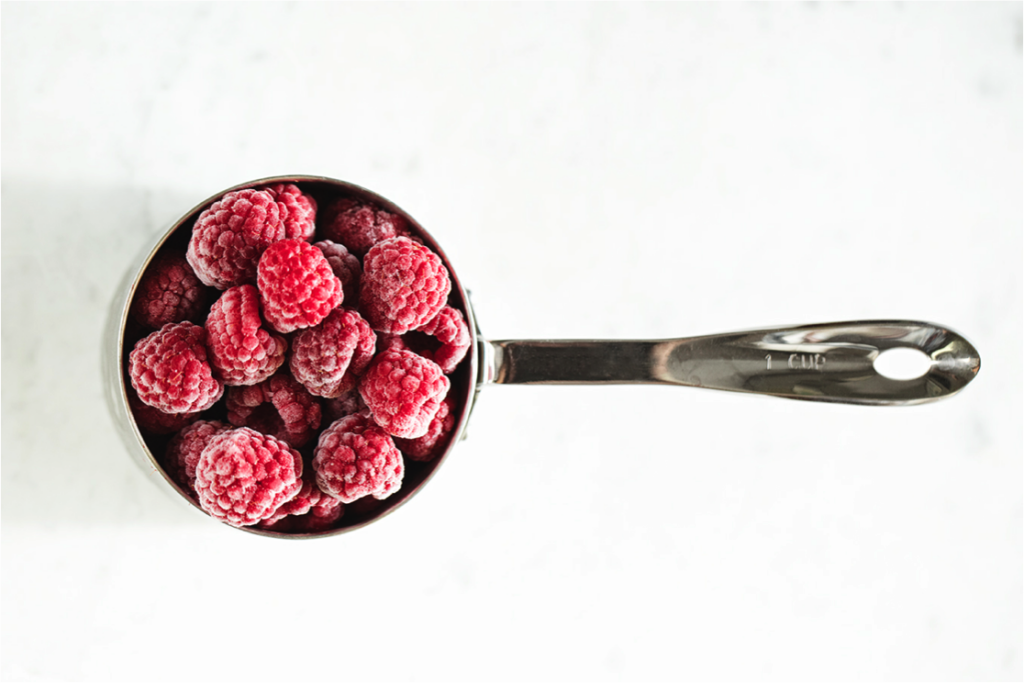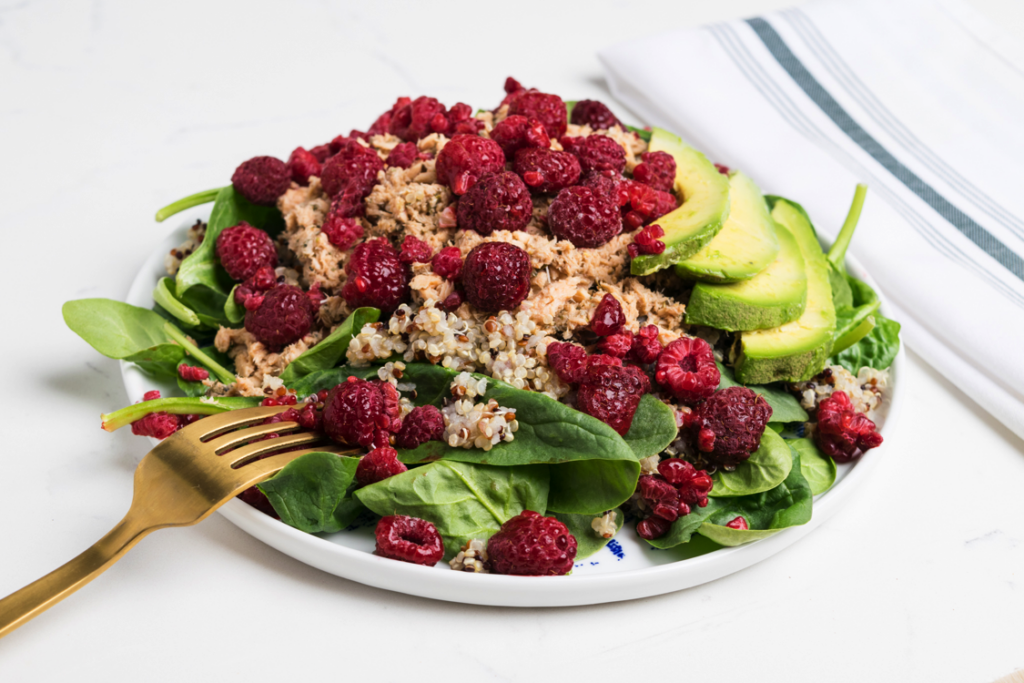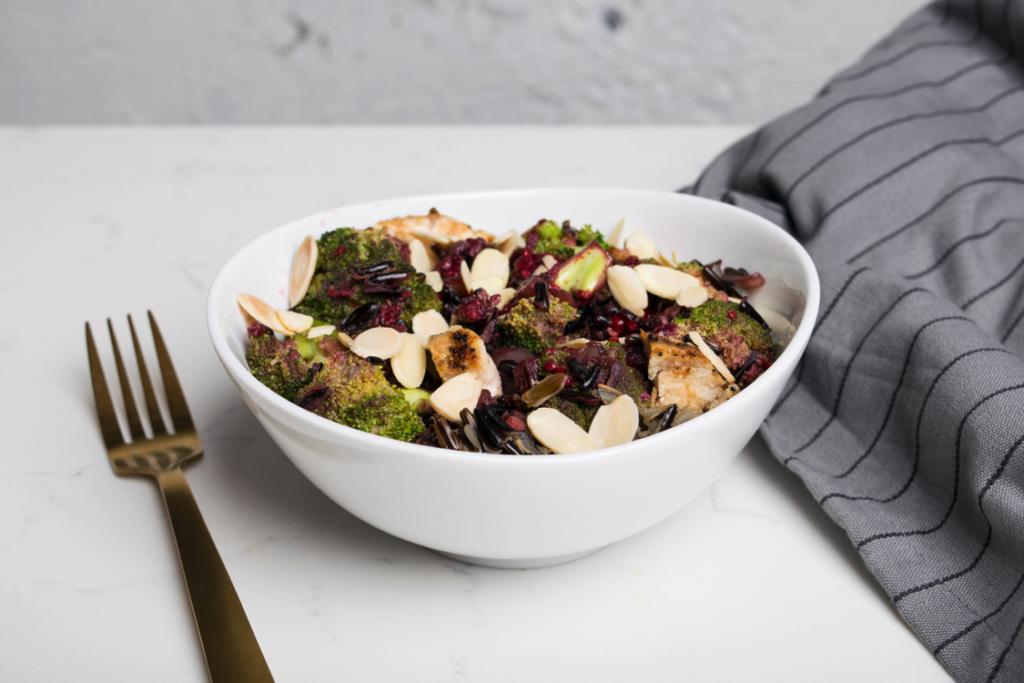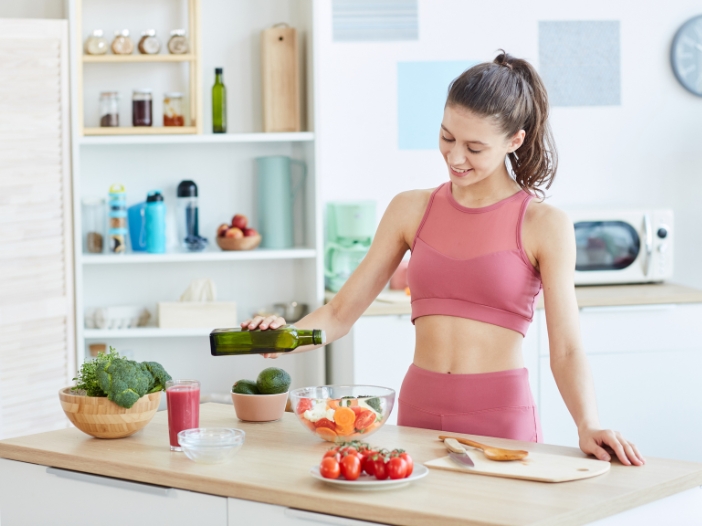
As a sports nutritionist, I consult for teams, work with professional athletes in numerous sports, and counsel fitness enthusiasts who engage in activities ranging from aquatics to Zumba and everything in between. Whether you’re a pro or weekend warrior, one thing is certain: after you’ve worked up a sweat, optimal nutrition helps maximize the results of your hard work.
Post-workout, your body is primed for recovery. The right ingredients may help replenish nutrients used up during exercise, and supply the raw materials necessary to heal from the wear your body just endured. Skipping a meal or snack after exercise can leave you weaker rather than stronger, and more vulnerable to injuries.
So, what should you eat?
Below, I outline some general guidelines that may help with your post-exercise recovery. Keep in mind that because individual needs will differ based on varying factors including activity level and body composition, it’s best to meet with a registered dietitian for personalized recommendations.
Here are 5 steps that may help prime post-workout recovery.
Step 1: Load up on produce
Include fruits and vegetables to infuse your meal with a broad spectrum of vitamins, minerals and antioxidants. Two of my go-to’s are green veggies and frozen fruit. I personally enjoy frozen red raspberries because they are one of the lowest in sugar content compared to other berries, and they’re a great source of vitamin C, packing 27% of the Daily Value per cup.
Step 2: Include lean protein
Protein is a building block of muscle, so including it in a post-workout meal or snack is a must. Opt for nutrient-dense, lean sources like chicken, turkey, fish, lowfat dairy, eggs, nuts and nut butters, and beans and legumes.
Step 3: Add in a healthy fat
Fat is an essential component of every cell in your body.In fact, fats also boost the absorption of fat-soluble vitamins. The Dietary Guidelines for Americans recommend a diet plan that substitutes good fats, such as polyunsaturated and monounsaturated fats in place of saturated and trans fats. This guidance also applies to athletes.
Step 4: Opt for whole food carbs
Carbohydrates serve as fuel providers. Post-workout or between workouts, including small portions, may help replenish the energy used during training. The best choices are nutrient-rich foods, as close to their natural state as possible, including whole grains and starchy vegetables, such as sweet potatoes and squash.
Step 5: Doctor it up with herbs and spices
Include herbs and spices to add a little flavor, aroma and color to your meal. Experiment with new combinations, like whipping cinnamon or mint to smoothies, adding dried or fresh herbs to vinaigrette, and doctoring up veggies, proteins, and whole grains with natural seasonings, including basil, cilantro, rosemary, garlic and ginger.
3 Easy Post-Workout Recipes using Frozen Raspberries
Raspberry Almond Smoothie
In a blender combine one cup of frozen raspberries, one small ripe banana, one small raw chopped zucchini, a scoop of vanilla-flavored pea protein powder, two tablespoons of almond butter, one cup of almond milk, two tablespoons of dry rolled oats, and a half teaspoon of ground cinnamon. Blend until smooth and enjoy!
Salmon Quinoa Raspberry Salad
In a small bowl whisk together one tablespoon of balsamic vinegar with one teaspoon each of stone-ground mustard, fresh-squeezed lemon juice and Italian herb seasoning. Add one can of wild salmon and mix to coat salmon with the dressing. Place two cups of baby spinach in a salad bowl and top with the salmon mixture, along with a half cup of cooked, chilled quinoa, one cup of frozen, thawed red raspberries and half of an avocado.
Superfood Stir Fry
In a medium pan over low heat, sauté a quarter cup of mined yellow onion in a quarter cup of organic low-sodium vegetable broth until onions are translucent. Add one cup of broccoli florets, a teaspoon of minced garlic, quarter teaspoon of fresh grated ginger, one eighth teaspoon each of crushed red pepper and black pepper, and one tablespoon of water. Sauté for a few minutes, until broccoli is slightly tender. Add three ounces of cooked diced chicken breast and one quarter cup of cooked wild rice and stir for an additional two to three minutes. Add one cup of frozen raspberries to heat through, transfer to plate and garnish with a quarter cup of sliced almonds.

